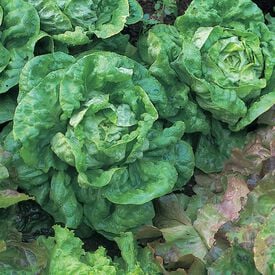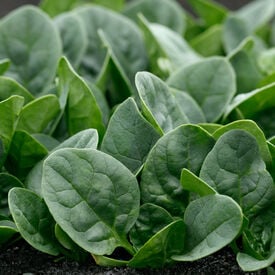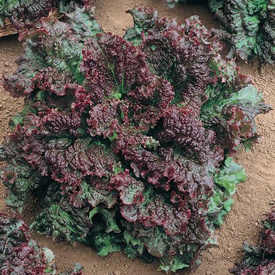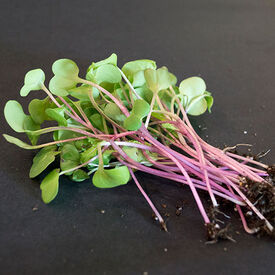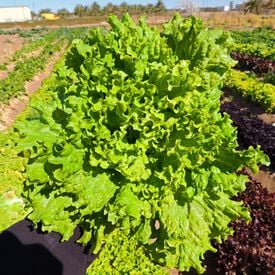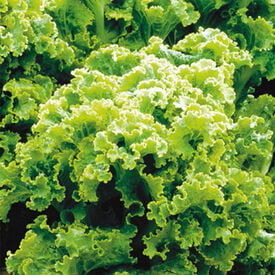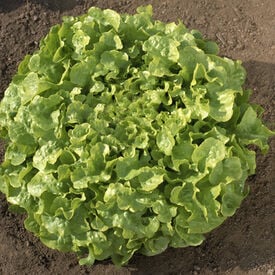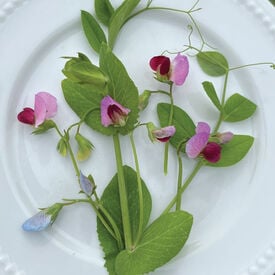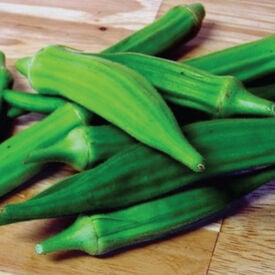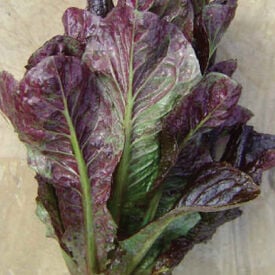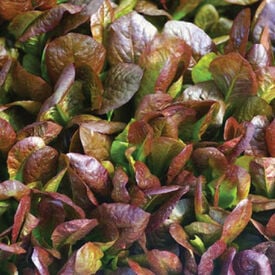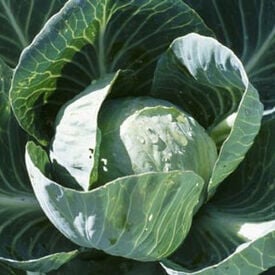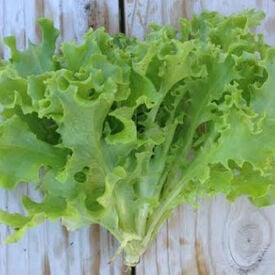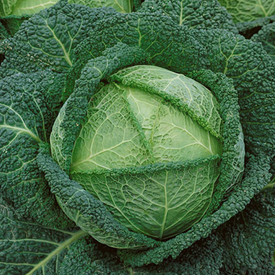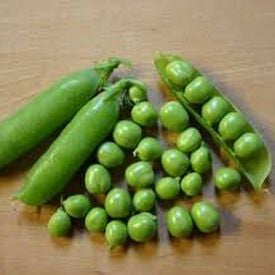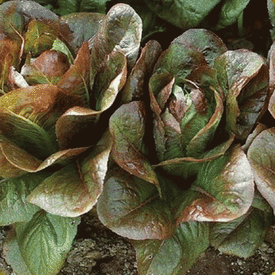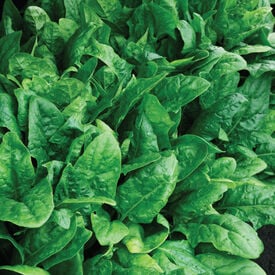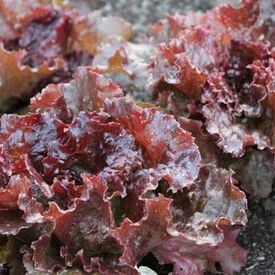All The Year Round Lettuce is a medium-sized green headed lettuce that is just like its name, good for all the year round! This slow bolt variety is solid even in hot weather, and good for far northern areas as it is very hardy. Sow All The Year Round in spring or late summer!
Countryside is a beautiful dark green very uniform baby leaf spinach variety. It has thick smooth round oval leaves. Countryside has good holding ability for baby leaf and it has acceptable bolt tolerance for fresh market growers. Due to its moderate growth habit, it has performed well in many West Coast baby leaf growing slots.
The Gabriella is a loose leaf lettuce variety that has beautiful deep wine colored leaves. This variety's purple leaves are frilly and sweet -- perfect for adding a pop of color to salads! The Gabriella's leaves are delicious from mesclun size to maturity. This variety is heat resistant and slow bolting.
The spicy flavor, attractive purple stems, and green leaves of the Hong Vit Radish makes it the perfect addition to any salad! This radish is a longtime favorite that is now available in organic form. A very fast growing microgreen! Grows straight and attractive purple stems that are hairless. Micro radish leaves add spicy flavor, visual appeal, and bulk to mixes.
The Waldmans Green Lettuce is the standard green leaf lettuce that is most widely grown for commercial. This variety is a highly productive lettuce that produces large, dark green leaves with slightly savoyed, wavy texture form loose, open heads.
Green Ice is a crispy loose-leaf lettuce that does well in hot weather! This variety produces an abundance of crunchy loose leaves. Green Ice's leaves are curled with deep green color. This lettuce is ready in just 45 days, it is among the earliest, yet will last well into summer thanks to its superior heat tolerance. Green Ice is one loose-leaf that just won't bolt!
The Oakleaf Lettuce gets its name for having very tender leaves that resemble the white oak leaf. This variety is an old time favorite that tastes great in mixed salads. The Oakleaf is perfect for planting late in the season. This lettuce will stay tasty and non-bitter well into the heat of summer!
The Dwarf Grey Sugar Pea is one of our customer favorite peas! Produces an abundance of attractive purple and blue flowers. These flowers are edible, have a light pea flavor and look great on many dishes. The mature peas are very flavorful and is ideal for steaming, stir-frying or eating fresh out of the garden. Dwarf Grey Sugar Pea is suitable for northern and southern regions, as it is tolerant to heat and cold.
The Emerald Okra is a beautifully bright early maturing okra variety! This okra is an old heirloom variety from the 1950's that was first developed by the Campbell's Soup Company. This variety produces straight okra that keeps its vibrant green color even after being cooked. Emerald Okra is best harvested between 3-4" for the most tender and tasty pods.
Red Romaine Lettuce has long, crinkled leaves with great crunch! This variety starts green and fades to redish-purple. The Red Romaine's leaves are12" tall and the plant is about 10-12" wide. This lettuce is often used in Caesar salads not only for its crunch, but also for its color. Use Red Romaine lettuce for an incredible edible purple border in your flower beds.
The Cimarron is a very beautifully colored romaine lettuce! This tasty lettuce has bright green-red leaves that fade to deep red tips. This romaine type lettuce has good disease and bolt resistance. Cimarron is a favorite among gardeners for its beautiful hue and crispy texture in salad mixes!
The All Seasons Cabbage is a very heat resistant cabbage that is resistant to yellowing and will offer a nice flavor in any dish. This cabbage produces fine heads that are about 10-11" across and average about 11-14 pounds.
Tango Lettuce is a fun curled baby leaf lettuce variety! This lettuce has a crisp clean texture and holds up well with numerous salad dressings. This attractive uniform plant forms tight erect rosettes that are 12" across and 6-8" tall. Tango is an oak leaf variety.
Dark green crumpled leaves, approximate 7 x 9 in. head, 6-8 lb, even better flavor after touched by frost, very tender.
The Early Frosty Pea is an old heirloom that, just like its name suggests, thrives in the colder climates. This variety does great in early spring or short season plantings. The vines are cold hardy and can grow to 30." This pea plant yields 3 1/2” pods filled with 6-7 delicious medium sized peas that are excellent for fresh eating or freezing for later use.
Rouge D'Hiver Lettuce is a beautifully multicolored French heirloom romaine. This variety's green leaves are tinted with medium-red color at the tip. Rouge D'Hiver is not just beautiful, but it is also very tasty and very easy to grow. This lettuce is a home favorite for resisting heat and cold stress if well watered. This variety has been recently resurrected.
Plymouth spinach is a new variety that is great for processing or fresh market growing. It has smooth, medium-dark green leaves that are uniform in shape and size. Plymouth is a moderate to fast-growing variety and has great yield potential.
The Red Sails Lettuce is a full rosette type that produces radiant bronze-red, ruffled and deeply lobed leaves that have a mild bitter-free flavor that pairs very well in salads. This slow-bolting lettuce is ready to cut early and holds its quality very well. Red Sails has six times the vitamin A and three times the vitamin C as other supermarket lettuces. This variety thrives in cool weather, but can also grow well in the spring, summer or fall.
